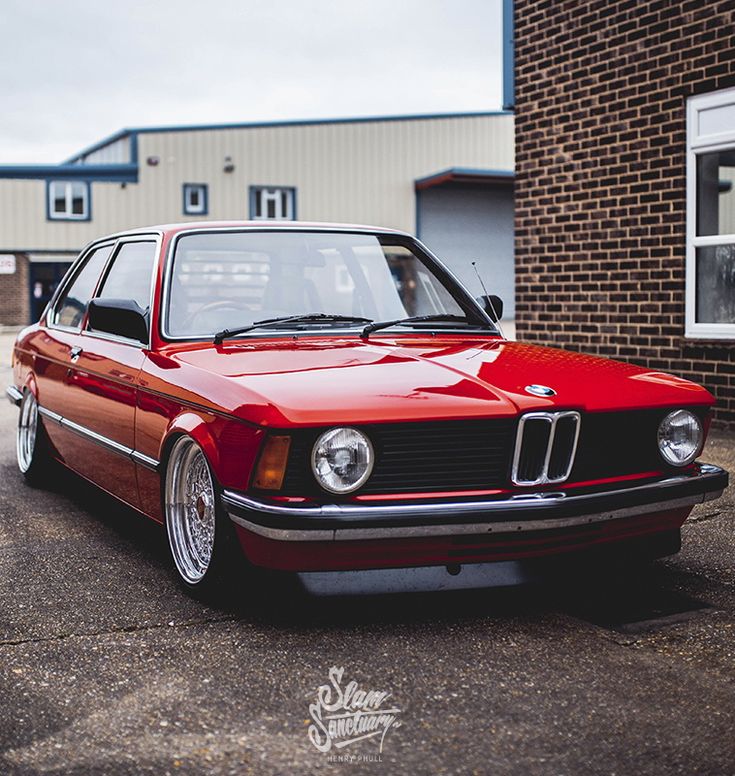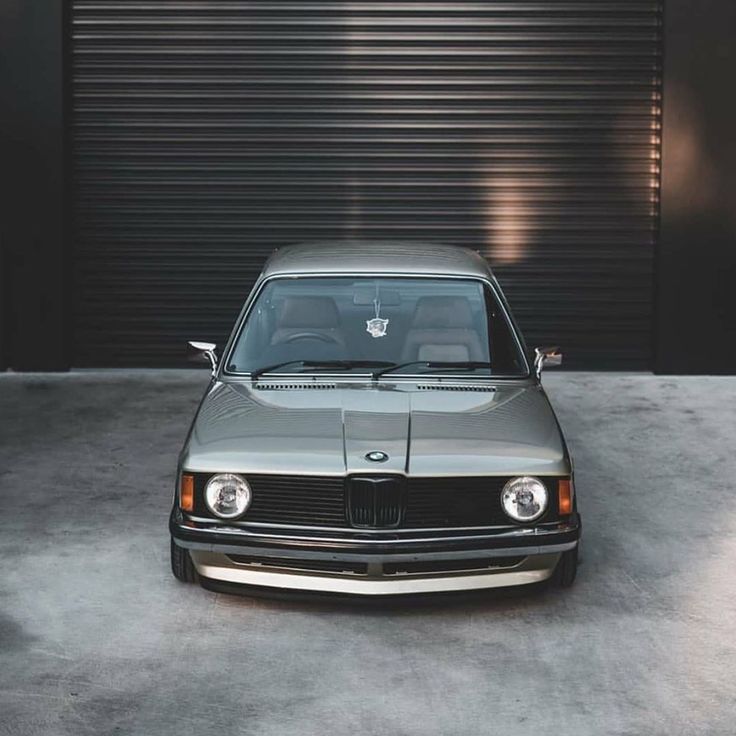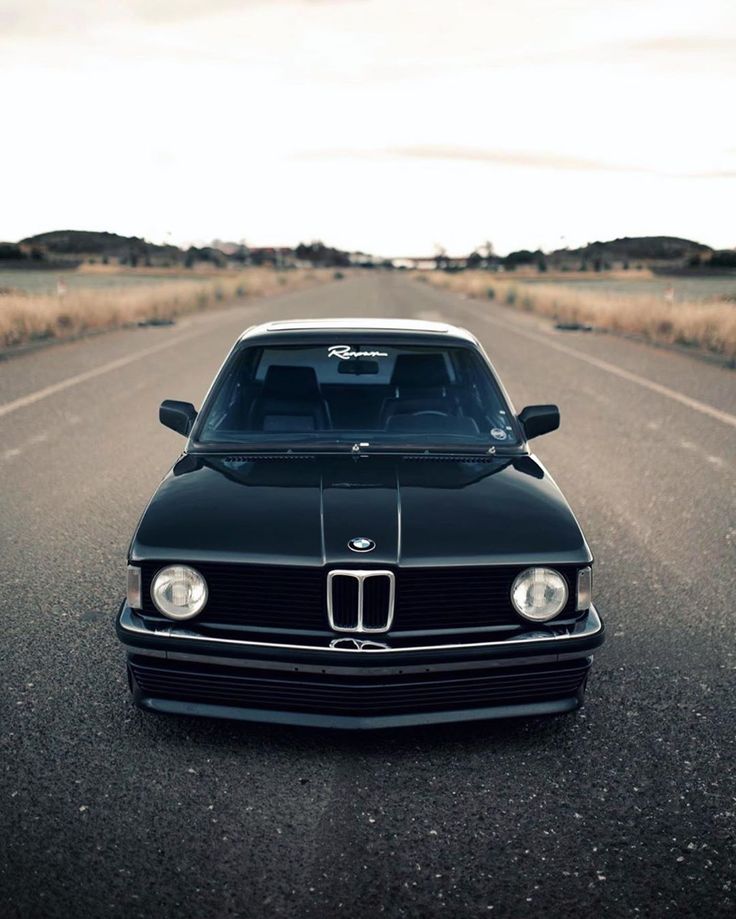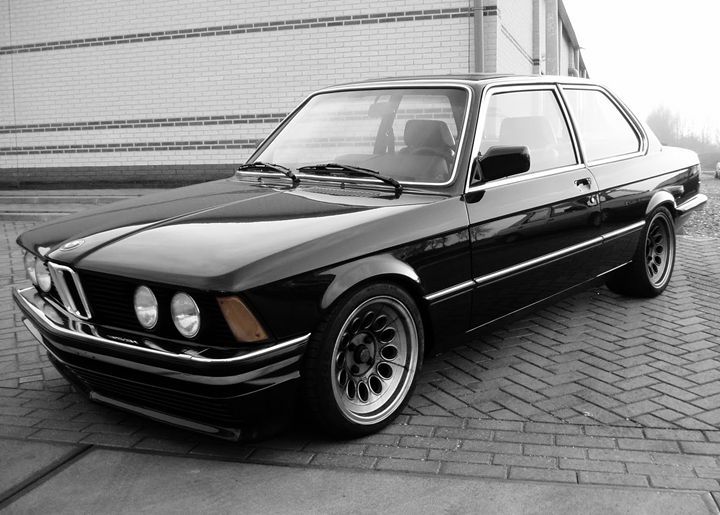The BMW E21 is the first generation of the BMW 3 Series and was produced between 1975 and 1983. It marked the beginning of BMW’s now-iconic 3 Series line of compact luxury sedans, which went on to become one of the most successful and influential models in the brand’s history. The E21 was designed to be a compact, sporty, and affordable luxury car that appealed to a younger audience while retaining the premium feel associated with BMW. It played a key role in establishing BMW’s reputation as a maker of performance-oriented, premium vehicles.
1. Overview of the BMW E21
The E21 was designed as the successor to the BMW 2002 and was based on the BMW Neue Klasse platform. It featured a more refined, modern design while maintaining the sporty characteristics that BMW was known for. The E21 was available in sedan form only, with a front-engine, rear-wheel-drive layout. The car was produced in both 2-door and 4-door configurations, though the 2-door coupe was the more common and iconic version.
The E21 laid the groundwork for the 3 Series’ legacy as BMW’s smallest and most affordable car, but it also set the stage for the next generation of sports sedans, offering a combination of stylish design, advanced engineering, and driving dynamics.
2. Engine Options
The BMW E21 came with a variety of engine options, depending on the model and the market in which it was sold. The engines ranged from small, fuel-efficient four-cylinder engines to more powerful six-cylinder engines.
Inline-4 Engines:
- BMW 316: 1.6L inline-4 engine, producing 90 hp (early versions)
- BMW 318: 1.8L inline-4 engine, producing 98 hp (later models)
- BMW 320: 2.0L inline-4 engine, producing 113 hp (early models)
- BMW 318i: 1.8L inline-4 engine, producing 105 hp (later models)
Inline-6 Engines:
- BMW 320/6: 2.0L inline-6 engine, producing 121 hp (available in some markets)
- BMW 323i: 2.3L inline-6 engine, producing 143 hp (higher-performance model, introduced in 1977)
- BMW 324d: 2.4L diesel engine, producing 75 hp (available in certain markets)
Engine Variants:
- The 318i and 323i models were some of the most sought-after variants, as they provided a balance between performance and affordability. The 323i was especially appreciated for its smooth inline-6 engine and higher power output.
3. Performance and Handling

The E21 was well-regarded for its sporty performance and driving dynamics. Here are some key aspects of its performance:
- Rear-Wheel Drive (RWD): The E21 featured rear-wheel drive, which contributed to a more dynamic and engaging driving experience. The rear-wheel-drive layout also allowed for better handling balance and weight distribution.
- Suspension: The E21 was equipped with an independent front suspension (MacPherson struts) and a semi-independent rear suspension. This design helped the car maintain a balanced and precise feel on the road, enhancing its driving dynamics.
- Lightweight Construction: The E21’s relatively lightweight construction, combined with a small engine range, gave it a nimble and agile feel. It was designed to offer a sporty driving experience while still being practical and economical.
- Performance: While not as fast as later generations of the 3 Series, the E21 was still considered a fun-to-drive car, particularly in the 323i trim, which offered a more powerful engine and superior performance. The 320/6 model was the best-performing model of the E21 and provided strong acceleration and top-speed performance.
4. Exterior Design
The exterior design of the E21 reflected the style and spirit of the 1970s, with clean lines and a compact, purposeful look. It featured a longer nose, a slightly more squared-off rear, and larger windows compared to its predecessor, the 2002.
- Front End: The E21’s front end featured the classic BMW twin kidney grille and quad headlights that have become iconic in the brand’s design language. The front bumper was chrome, and the overall look was sleek but functional.
- Body Design: The E21’s design was boxy yet aerodynamic, contributing to its sporty image. It had a wide stance, short overhangs, and a low roofline that gave the car a dynamic appearance.
- Wheelbase: The wheelbase of the E21 was short, contributing to its agile handling. It was designed to be a compact, urban-friendly car while still offering a distinct presence on the road.
5. Interior Design and Features
The E21’s interior was focused on offering a comfortable and driver-oriented cabin. While it didn’t have the luxury appointments of later 3 Series models, the E21 was equipped with a functional and practical interior, with attention to detail that reflected BMW’s premium ethos.

- Dashboard: The dashboard layout was functional, with clear, easy-to-read instruments. The E21’s dashboard had a driver-focused design, with the steering wheel and controls angled slightly towards the driver for better ergonomics.
- Materials: The interior featured simple but quality materials, including vinyl and leather upholstery, and cloth seat options. While it wasn’t as lavish as the later BMW models, it had a clean, minimalist design.
- Seating: The E21 was primarily a 2-door coupe (though 4-door versions were available), so the front seats were comfortable but firm, with decent support for long drives. The rear seats were more compact and not as spacious as later BMW sedans, making the E21 a driver-focused vehicle.
- Technology: The E21 wasn’t equipped with modern electronics or high-tech infotainment systems. Instead, it focused on the essentials, such as a simple radio, a set of dials, and the performance-oriented driving experience.
6. Safety and Reliability
The BMW E21 was not equipped with the advanced safety features that we find in modern cars, but it did offer the basic safety measures of the time:
- Basic Safety Features: The E21 came with basic safety features such as seatbelts, headrests, and crumple zones in the bodywork. The car’s structure was engineered to provide a certain level of protection in case of an accident.
- Reliability: The E21 was a generally reliable car, especially when properly maintained. Regular service and attention to the engine and suspension components were crucial to ensure long-term durability. However, like many cars of its era, the E21 could suffer from rust, particularly around the wheel arches and lower body panels.
7. Legacy and Impact
The E21 3 Series holds a special place in BMW’s history as the model that established the foundation of the 3 Series line. It wasn’t the most powerful or luxurious car of its time, but it set a precedent for what the 3 Series would become—a vehicle that balanced affordable pricing, sporty handling, and luxury appointments.
- Success: The E21 was a commercial success, with over 1.3 million units sold during its production run. It was particularly popular in European markets, but it also found its way to North America and other parts of the world.
- Cultural Impact: The E21’s combination of sportiness and affordability made it a favorite among driving enthusiasts and those looking for a compact, premium car. It is considered a classic today, with a strong following of enthusiasts who appreciate its timeless design and driving dynamics.
- Influence on Future Models: The E21 laid the groundwork for the 3 Series’ subsequent generations, with each new model building on the performance, luxury, and style elements introduced by the E21.
8. Pricing and Collectability
Today, the E21 is regarded as a classic car by many enthusiasts. Prices for well-maintained models are generally affordable compared to other classic BMWs. However, as the E21 gains recognition in the classic car market, prices are gradually rising, especially for the 323i and other desirable models.
- Prices: You can find E21 models in a wide range of prices, with the most common models (318, 320, 323i) generally ranging from $5,000 to $15,000 depending on the condition, mileage, and model year.
- Collectability: The E21 has become a popular entry-level classic car for collectors, as its affordability, classic BMW styling, and driving experience make it an attractive option for enthusiasts who want to own a piece of BMW history.
Key Specs for the BMW E21 (1975-1983)

| Model | Engine Type | Power (hp) | 0-60 mph (sec) | Top Speed (mph) |
|---|---|---|---|---|
| BMW 316 | 1.6L Inline-4 | 90 hp | 12.0 | 103 |
| BMW 318 | 1.8L Inline-4 | 98 hp | 10.5 | 108 |
| BMW 320 | 2.0L Inline-4 | 113 hp | 9.0 | 115 |
| BMW 323i | 2.3L Inline-6 | 143 hp | 8.0 | 120 |
| BMW 320/6 | 2.0L Inline-6 | 121 hp | 9.2 | 115 |
The BMW E21 is a true classic and a pioneer of the iconic 3 Series. With its sharp styling, solid performance, and handling, it laid the foundation for future generations of the 3 Series that continue to be loved by enthusiasts worldwide. If you’re into classic BMWs, the E21 is a great entry point into the world of collectible cars.

